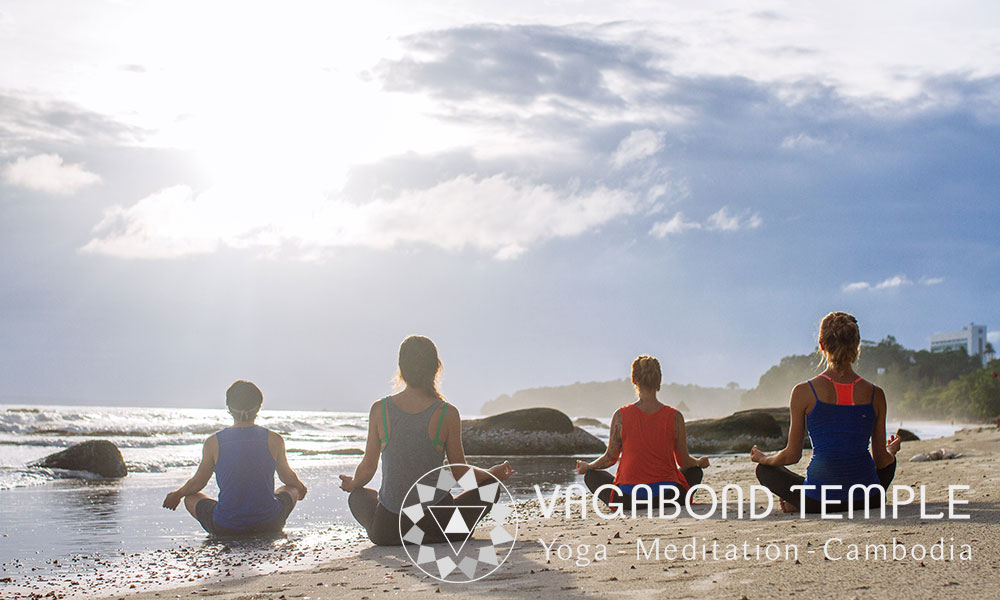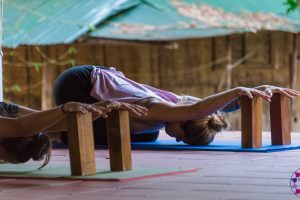Using Yoga to Prepare Our Bodies and Minds for Meditation

When people think of Yoga, they are most likely to think about the postures that we see performed in Yoga classes. However Yoga, as it was originally developed in Ancient India, had much more to do with meditation than it did postures. In one of the most influential Yogic texts, “The Yoga Sutra” (written by Patanjali some 2000 years ago) just 4 out of the 196 sections were about Yoga, whereas three quarters of the book focuses on meditative practices. This is because meditation is really the fundamental practice of the path of Yoga. By developing a deeper and deeper concentration, Yoga enables us to see right into the heart of our being; when we are no longer lost in our thoughts, or at the mercy of our emotions, we are able to live truly freely.
Preparing The Body And Mind
Patanjali breaks down Yoga into 8 segments known as the 8 Limbs of Yoga. The first 4 limbs set the foundational practices that prepare the practitioner for the meditative work. The first limb Yama is concerned with how we should conduct ourselves in everyday life. The second, Niyama, teaches us how to bring the inner world under our control. The forth, Asana, teaches us how to strengthen our body, the vehicle for our spiritual growth; this limb was later developed into the postures we see in today’s classes. The forth limb, Pranayama, teaches us to breath in a way that will energise us and facilitate meditative practices.

The final three limbs are the meditative processes leading us through concentration, meditation and eventually to a state of Union.
Withdrawing From The Senses
The bridge between the first four foundational limbs, and the final three meditational ones is Pratyehara (control of the senses). Once our bodies and minds have been prepared by the foundational work, we next learn to master the external objects of the world which appear to us through our senses. Through our entire waking lives we are bombarded by sensory information, much of it with a strong emotional attachment. We may meet with friends, lovers, strangers or people we find difficult; we may see things that we desire, or things we wish to escape from. If we are not careful this will cause us to be overwhelmed with thoughts and emotions – so we will not be able to go into deep meditation. For this reason Pratyehara advocates withdrawing from the sensory world, using the beautiful metaphor of a turtle withdrawing into its shell. However, Pratyehara is not about cutting ourselves off from the world: it is not the sensory objects that are the problem, but our attachments to them. If we can enjoy a beautiful experience without depending on it for our happiness, or desiring it to last forever we are practising Pratyehara. Or if we can endure a painful situation without torturing ourselves with negative thoughts and emotions, realising it will eventually pass, this is also the practice.
Dharana: The Art of Concentration
After withdrawing from the senses, the next limb is Dharana (concentration) which can be thought of as the first stage of meditation. Before we can truly meditate, we must train our minds to remain still and focused on an object. There are many different objects we can use for Dharana (the breath, the third eye, an area in-front of us or a mantra). When we begin this practice we will find that our minds tend to wander, one distracting thought will lead to another and we will lose our concentration as the mind flies away on autopilot. When this happens, all we need to do is bring the attention back to the object. A huge insight that we will immediately learn from this practice is that we are not in control of our thoughts; it is as if our thoughts are thinking us rather than the other way round! This may seem frustrating to new practitioners, but it is a totally normal part of the process; even if we have to stop our thoughts a thousand times and return to the object, this is in itself the practice. Eventually we will find our concentration stays on the object for extended periods of time; we will learn the good news: that we CAN control our thoughts after all.
Nobody Said It Was Easy
We should not expect too much too soon: this is a difficult practice and takes real courage, in fact it is often said to be the hardest of all spiritual practices. We may have to face many painful experiences: bodily and emotional pain, negative thoughts and self-doubt. However the is a reason why meditation is seen as such a fundamental spiritual practice, it brings about incredibly powerful results.
As we become aware of our thoughts we will be able to ask questions such as, “where is this thought coming from?”, and “does this thought serve me?”. We will recognise that many of the thoughts we have are actually detrimental to our wellbeing, in fact we will be surprised to see just how few thoughts are beneficial. We will also notice the transient nature of our thoughts: what seems urgently important today is the replaced by something else tomorrow.
With this awareness comes to power to let go of the thoughts that are troubling us, finally bringing them under control. It is not a case of fighting with the thoughts or trying to change them, just the awareness in itself will cause them to lose their power over us. When the unhelpful thought arrives, rather than giving it a warm welcome and inviting it in to wreck our house, we will simply refrain from opening the door and wait for it to leave. We will learn not to identify with our thoughts, and recognise that they are simply a phenomena within us and do not define who we are; we that we do not have to blindly follow them. Many of them do not come from our true selves but from what we have been told by others, for example that critical voice within us may have come from our families or teachers.
Dhyana: The True Meditation
Once this state of mental freedom is reached, the mind will fall in love with it, choosing this new, calm state over its previous one of agitation. At this stage of concentration, the mind will rest on its object of fixation with no distraction. This is Dhyana, the 7th Limb of Yoga.
In our daily lives, cultivating this deep meditation will bring us calm and a sense of control, leaving behind our unhelpful thinking patterns and resting in pure awareness. On a deeper level it will prepare us for Samadhi, the stage of complete Union with all beings. Samadhi is the 8th limb and ultimate aim of all Yogic practice.



